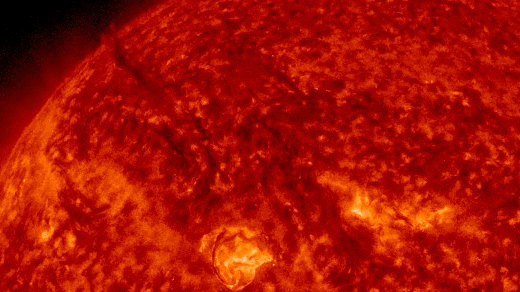
Two loops of "dark" plasma exploded from the sun yesterday (July 21), and a NASA spacecraft caught it on video.
NASA's Solar Dynamics Observatory (SDO) watched as two loops of cool, dense plasma erupted from the sun's surface, looking eerily similar to a pair of dementors from Harry Potter hovering over the sun.
However, instead of soul-sucking mythical creatures, these blackish loops of plasma are are actually the beginning stages of a coronal mass ejection (CME), which are quite the magnetic mess that can create solar storms that impact Earth.

In the sped-up video, you can see two wispy black plumes of plasma launched from sunspot AR3757 on Sunday along with a M1-class solar flare. These active sunspot regions can spew electromagnetic energy from the sun's corona at any given moment and as these plumes navigate away from the sun's atmosphere, they collect more and more plasma that eventually consolidate into a CME's most inner makings.
So why does the plasma look so dark compared to its surroundings? As it billows out and away from the sun, it's at a much lower density and temperature compared to the massive molten heart of our solar system, making it appear dark in SDO's imagery.
Once a CME is born, scientists can use images from the SOHO coronagraph to spot the halo, which is its signature, and determine if its propagating toward Earth and could bring our planet any impacts.
With the current forecast by National Oceanic and Atmospheric Administration (NOAA)s Space Weather Prediction Center (SWPC), this CME is expected to arrive at Earth later in the day on July 24 (Wednesday) and kick up our geomagnetic activity a notch.
So, for all of the aurora chasers out there, this might bring a vibrant show of colors to the night sky for some northern and upper Midwest states spanning from New York to Idaho.





!["[T]he First and Fifth Amendments Require ICE to Provide Information About the Whereabouts of a Detained Person"](https://images.inkl.com/s3/publisher/cover/212/reason-cover.png?w=600)

